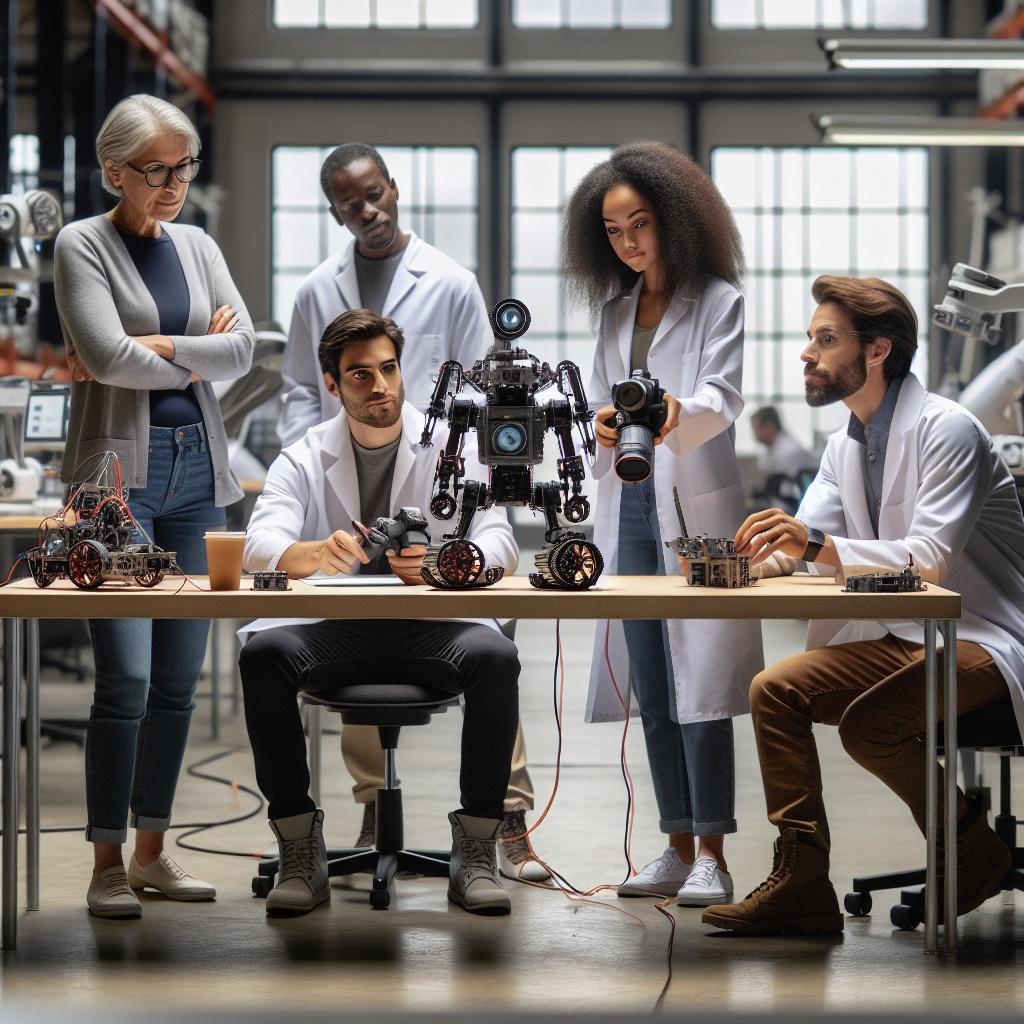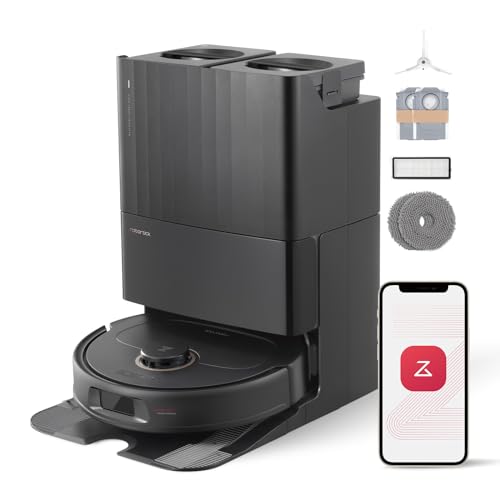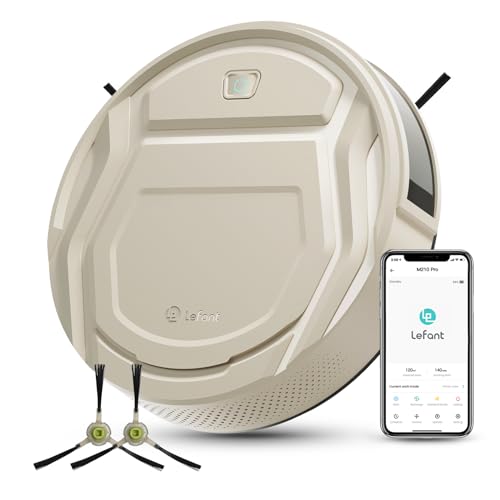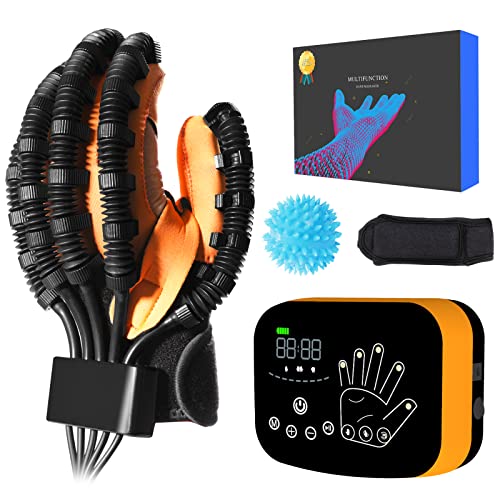Introduction to Robotics
Robotics is an interdisciplinary field that combines elements of engineering, computer science, and cognitive science to design, construct, operate, and use robots. The evolution of robotics can be traced back to ancient times when inventors created mechanical devices that mimicked human actions. However, modern robotics took shape in the mid-20th century with the development of programmable machines capable of executing predefined tasks. With advancements in technology, robotics has significantly evolved, enabling machines to perform complex tasks beyond mere automation.
The foundational concepts of robotics encompass several key areas, including kinematics, dynamics, control systems, and artificial intelligence. Kinematics deals with the motion of robots, while dynamics is concerned with the forces that impact their movement. Control systems are critical for programming robots to execute tasks accurately and efficiently, often involving feedback loops to refine their performance. Furthermore, artificial intelligence (AI) increasingly plays a vital role in enhancing the abilities of robots, allowing them to learn from their environments and make autonomous decisions.
The importance of robotics spans various sectors, including industry, healthcare, and daily life. In industrial settings, robots augment human labor, improving productivity, precision, and safety. Automation in manufacturing, for instance, is revolutionizing production lines, streamlining operations, and minimizing errors. In healthcare, robots assist in surgeries, facilitate patient care, and even serve as companions for the elderly, proving invaluable support for medical professionals. In daily life, robotics is gradually permeating household tasks and entertainment, offering convenience and enhancing quality of life.
With the rapid advancement of technologies, the future of robotics holds immense potential. This blog post will delve into the latest innovations and the emerging trends in this exciting field, exploring how robotics continues to reshape industries and human interactions.
Current Advances in Robotics Technology
Recent technological achievements in robotics are fundamentally transforming various sectors by enhancing the capabilities and efficiencies of machines. One of the most notable advancements lies in the integration of artificial intelligence (AI) with robotics. This synergy has enabled robots to perform complex tasks that require reasoning, adaptability, and decision-making, thus significantly improving their functionality. AI algorithms, particularly those grounded in machine learning, allow robots to learn from their environments, adapt to changing conditions, and optimize their performance over time.
Moreover, advancements in sensor technologies have played a crucial role in elevating the effectiveness of robotic systems. Modern robots are equipped with a wide array of sensors that facilitate an improved perception of their surroundings. These sensors can include LIDAR, ultrasonic, and infrared technologies, which help robots navigate and interact safely within their environments. For instance, autonomous vehicles employ sophisticated sensor fusion techniques, integrating data from multiple sources to create comprehensive environmental maps that inform their navigation systems.
Innovative robots exemplifying these advancements include Boston Dynamics' Atlas, a humanoid robot capable of dynamic movement and agility, showcasing the integration of advanced AI with intricate motor capabilities. Similarly, SoftBank’s Pepper robot demonstrates the ability to engage with humans through emotional recognition and response, indicative of AI's role in enhancing robot-human interaction. Robotic systems in industrial settings are also benefiting from these technologies; for example, collaborative robots, or cobots, equipped with intelligent sensors can work alongside humans, improving workplace safety and efficiency.
As these trends continue to evolve, the future of robotics is poised for unprecedented enhancement, fueled by ongoing advancements in AI integration, machine learning algorithms, and sensor technologies. The implications for industries such as manufacturing, healthcare, and consumer services are substantial, marking a new era in robotic technology development.
Robotics in Healthcare
The integration of robotics into the healthcare sector marks a significant shift in the way medical care is delivered. One of the most notable applications is the use of surgical robots, which enhance precision and control during complex procedures. These robotic systems allow surgeons to perform minimally invasive surgeries with greater accuracy, reducing patient recovery times and minimizing complications. For instance, da Vinci Surgical Systems have become staple tools in urological, gynecological, and cardiac surgeries, significantly improving surgical outcomes.
Another area where robotics is making strides is in rehabilitation therapy. Robotic-assisted rehabilitation devices are designed to help patients recover from injuries or surgeries by providing tailored therapy through controlled, robotic movements. These devices not only assist patients in their physical therapy sessions but also offer real-time feedback to healthcare providers, allowing for personalized treatment plans that adapt to the patient’s progress. Systems like exoskeletons and robotic arms are transforming patient rehabilitation, enabling individuals to regain mobility and independence.
Furthermore, robotics are being increasingly utilized to enhance elderly care. Robotic companions are emerging as viable solutions to address the loneliness and health monitoring needs of seniors. These robots can engage in conversation, remind patients to take medications, and even monitor their vital signs. The presence of robotic companions helps to improve the quality of life for the elderly and offers peace of mind to their families, knowing that their loved ones are being cared for even in their absence.
Looking to the future, the potential of robotics in healthcare is vast. Innovations such as artificial intelligence and machine learning are expected to further refine robotic capabilities, enhancing decision-making in surgeries and improving patient outcomes through predictive analytics. As research progresses, we can anticipate a future where robotics will play an even more integral role in healthcare delivery, optimizing operations, and ultimately leading to better patient care.
Robotics in Manufacturing and Industry
Robotics has significantly transformed the manufacturing and industrial landscape over recent years. The adoption of collaborative robots, commonly known as cobots, has reshaped how businesses approach productivity and efficiency. Unlike traditional industrial robots that operate in isolation, cobots are designed to work alongside human employees, enhancing the potential for seamless integration within production systems. These robots are not only user-friendly but also adaptable, enabling manufacturers to optimize workflows without significant downtime.
Additionally, the implementation of automation systems has further revolutionized manufacturing processes. Automated systems can perform repetitive tasks with precision and speed, reducing human error while maximizing output. For example, automated assembly lines can quickly adapt to varying product specifications, allowing manufacturers to respond dynamically to market demands. This flexibility in production is vital as industries increasingly demand customized solutions, leading to shorter lead times and increased customer satisfaction.
Furthermore, recent advancements in industrial robots have placed emphasis on enhancing safety in factories. Modern robots are equipped with sophisticated sensors and machine learning algorithms that allow them to detect and respond to their environment. This capability not only minimizes accidents but also ensures a safer working atmosphere for human employees. As a result, manufacturers can mitigate risks associated with heavy machinery and potentially harmful operations, fostering a culture of safety along with productivity.
However, the rapid integration of robotics into the workplace does raise important considerations regarding the future workforce. While automation may lead to increased efficiency, it also prompts questions about job displacement and the evolution of job roles. The demand for skilled workers who can maintain and operate these advanced systems will likely rise, thereby necessitating a shift in workforce training and development initiatives. The balance between technological advancement and human employment will be a critical aspect of the ongoing dialogue in the realm of manufacturing and industry.
Autonomous Robotics: Drones and Beyond
The advent of autonomous robotics has marked a significant milestone in technology, with drones emerging as one of the most prominent applications across various industries. These unmanned aerial vehicles (UAVs) are increasingly being integrated into sectors such as agriculture, logistics, environmental monitoring, and more, revolutionizing operational efficiencies and decision-making processes. In agriculture, for instance, drones are utilized for precision farming, enabling farmers to monitor crop health, optimize irrigation, and enhance yield through data-driven insights. The capability to collect high-resolution imagery and analyze field conditions in real-time is transforming traditional farming practices into highly efficient, tech-driven operations.
In the logistics realm, autonomous drones facilitate faster and more efficient delivery systems. Companies are exploring the potential for reducing delivery times and operational costs through aerial deliveries, allowing for goods to be transported directly to consumers or specific locations without the need for ground transport. This innovation not only signifies a shift in logistics operations but also represents a step toward sustainable practices, minimizing traffic congestion and carbon emissions associated with conventional delivery methods.
However, the widespread adoption of autonomous systems, such as drones, brings forth technical challenges and regulatory considerations that cannot be overlooked. Issues regarding safety, privacy, and air traffic management require comprehensive frameworks to ensure the responsible integration of drone technology into our daily lives. Policymakers and industry stakeholders must collaborate to develop regulations that encourage innovation while safeguarding public interests. As advancements in autonomy continue, the impact of drones and similar technologies on societal operations will likely deepen, leading to a future where autonomous robotics play an indispensable role across various domains.
Robotics in Everyday Life
In recent years, the integration of robotics into everyday life has become increasingly evident. This shift is not only transforming various industries but is also making a significant impact on how individuals manage their daily tasks. From domestic robots like vacuum cleaners to sophisticated robotic assistants, the presence of robotic technology in our homes is steadily on the rise. These innovations aim to enhance convenience, efficiency, and overall quality of life.
Robotic vacuum cleaners, for instance, have emerged as a popular domestic aid. Their ability to autonomously navigate spaces and clean floors has revolutionized mundane household chores. Equipped with advanced sensors and machine learning algorithms, these devices can identify obstacles and map out living areas efficiently, reducing the time homeowners spend on cleaning, leading to more leisure time and reduced physical exertion.
In addition to cleaning robots, smart home devices have played a pivotal role in modern living. These gadgets, often powered by artificial intelligence, allow for seamless integration of various household functions. Voice-activated virtual assistants can control lighting, adjust room temperature, and even lock doors, fostering an environment of enhanced comfort and security. This technological advancement not only simplifies daily routines but also opens a dialogue regarding privacy and data security.
As these robots become more prevalent, it is essential to consider their implications for future living. While many welcome the convenience robotics provides, concerns surrounding privacy and data protection may arise. The continuous collection of user data to optimize robotic functions has sparked discussions about consent and ownership of personal information. Therefore, addressing these challenges will be crucial as we navigate the growing presence of robotics in our lives.
In conclusion, the advancements in robotics are reshaping our daily experiences. Embracing these innovations while ensuring ethical considerations are met remains imperative for an acceptable future integration of robotic technology into our homes.
Future Trends in Robotics
The field of robotics is on the brink of exciting advancements, with several key trends poised to shape its future. One prominent area of development is soft robotics, which emphasizes the creation of adaptable and flexible robots. These robots utilize soft materials that allow them to interact safely with humans and traverse diverse environments. This trend is particularly significant in applications such as healthcare and rehabilitation, where robotic systems need to provide assistance without causing harm. Research in this domain is focused on creating robots that can change shape and adapt to their surroundings, enhancing their versatility in real-world tasks.
Another noteworthy trend is the integration of brain-computer interfaces (BCIs) into robotics. This technology enables direct communication between the human brain and robotic systems, facilitating control and interaction in unprecedented ways. BCIs are being explored not only for improving the capabilities of assistive robots for individuals with disabilities but also for enhancing cognitive functions and providing new levels of engagement in various applications, including gaming and virtual reality. As this technology continues to evolve, it could revolutionize the manner in which humans interact with machines.
Swarm intelligence is also emerging as a critical trend within robotics. This concept draws inspiration from the collective behavior of natural systems, such as ant colonies and flocks of birds, to design autonomous robots that can work collaboratively. Current research aims to enhance efficiency and problem-solving through decentralized control, allowing multiple robots to undertake complex tasks in unison. Potential breakthroughs in this area could lead to advancements in logistics, environmental monitoring, and disaster response, where swarming robots can carry out operations dynamically and effectively.
In conclusion, the future of robotics is marked by the development of soft robotics, brain-computer interfaces, and swarm intelligence, which collectively hold the promise of profound transformations across various sectors. As research initiatives progress, it is anticipated that these innovations will yield significant contributions to the next generation of robotic systems.
Challenges Facing Robotics Development
As the field of robotics continues to grow at an unprecedented pace, several challenges threaten to stifle its potential. One of the most significant concerns is the ethical implications of deploying robotic systems. Researchers and developers are increasingly confronted with questions related to the autonomy of robots, particularly in areas such as artificial intelligence. Should robots be allowed to make decisions that impact human lives? This debate underscores the need for establishing a robust ethical framework to guide future innovations while ensuring accountability.
Safety regulations also pose a formidable barrier to robotics development. Many robots operate in environments where human interaction is inevitable, from manufacturing plants to healthcare settings. Establishing comprehensive safety protocols is crucial to prevent accidents, injuries, or even fatalities. As robots become more integrated into daily life, ensuring their reliability and safety will be paramount. Therefore, regulatory bodies must evolve alongside technology to keep pace with new developments and address these critical safety issues.
High development costs are another significant hurdle faced by robotics developers. Since creating advanced robotic systems often entails high initial investments, securing funding can be challenging. This financial barrier may limit research opportunities and restrict the talent pool available to the industry. To facilitate progress, public-private partnerships and grants can play a pivotal role in supporting innovative robotic projects.
Furthermore, technological limitations remain a pressing concern. While advancements in machine learning and artificial intelligence have propelled robotics forward, challenges such as limited battery life, processing power, and the intricacies involved in human-robot interaction persist. Overcoming these limitations is essential for fostering the widespread adoption of robotics in various sectors. Addressing these diverse challenges is crucial for ensuring the successful evolution of robotics and maximizing its transformative potential in society.
Conclusion: The Path Ahead for Robotics
As we have explored throughout this post, robotics is undergoing a remarkable transformation, fueled by ongoing innovation and advances in technology. From autonomous vehicles to robotic assistants, the applications of robotics are expanding at an unprecedented rate. These innovations not only improve efficiency in various sectors, including manufacturing, healthcare, and logistics but also present new opportunities for enhancing everyday life. For instance, robotic systems enable precision in surgical procedures, provide support for the elderly and disabled, and streamline complex tasks in industries.
The integration of artificial intelligence and machine learning with robotics is particularly noteworthy, as these technologies empower robots to learn from their environment, adapt to changing circumstances, and make decisions with minimal human intervention. This capability is paving the way for smarter and more capable robotic systems that can address complex challenges. Furthermore, as we witness the evolution of collaborative robots or cobots, we can expect more seamless interactions between humans and machines, enhancing productivity while maintaining safety.
However, the advancements in robotics also raise important societal considerations. The potential for job displacement, ethical implications of robotic decision-making, and privacy concerns pose challenges that require careful deliberation. Engaging in dialogues about these topics is essential for ensuring that the development of robotics aligns with societal values and benefits all. As we look to the future, it is clear that robotics holds immense potential to enhance our lives. Embracing ongoing innovation in this field will be critical, not only for economic growth but also for improving quality of life across global communities.
In conclusion, the trajectory of robotics promises exciting developments that will continue to shape our world. Reflecting on the possibilities and implications of these advancements invites us to think critically about our role in shaping a future where robots complement human efforts and contribute positively to society.







